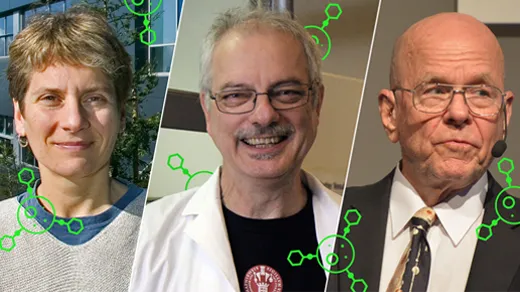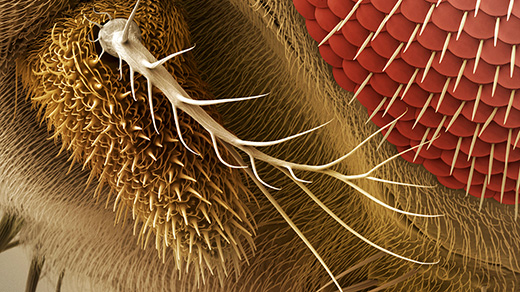What's up in
Chemistry
Latest Articles
Molecule-Building Innovators Win Nobel Prize in Chemistry
The chemists Carolyn Bertozzi, Morten Meldal and K. Barry Sharpless were recognized for their development of click chemistry and bioorthogonal chemistry.
What Is Life?
Without a good definition of life, how do we look for it on alien planets? Steven Strogatz speaks with Robert Hazen, a mineralogist and astrobiologist, and Sheref Mansy, a chemist, to learn more.
Quantum Complexity Tamed by Machine Learning
If only scientists understood exactly how electrons act in molecules, they’d be able to predict the behavior of everything from experimental drugs to high-temperature superconductors. Following decades of physics-based insights, artificial intelligence systems are taking the next leap.
Chemistry Nobel Prize Honors Technique for Building Molecules
Benjamin List and David MacMillan received the 2021 Nobel Prize in Chemistry for their development of asymmetrical organocatalysis.
Secret Workings of Smell Receptors Revealed for First Time
Researchers have finally seen how some smell receptors bind to odor molecules. The work yields new insights into one of the most mysterious and versatile senses.
Sharon Glotzer’s Deep Curiosity About Order From Chaos
The computational physicist Sharon Glotzer finds unifying principles that structure the chaotic dance of the particles that make up matter.
Nobel Chemistry Prize Awarded for CRISPR ‘Genetic Scissors’
Emmanuelle Charpentier and Jennifer Doudna have been awarded the 2020 Nobel Prize in Chemistry for their development of CRISPR/Cas9 genetic editing.
Alchemy Arrives in a Burst of Light
Researchers have shown how to effectively transform one material into another using a finely shaped laser pulse.
Nobel Awarded for Lithium-Ion Batteries and Portable Power
John Goodenough, M. Stanley Whittingham and Akira Yoshino shared the 2019 Nobel Prize in Chemistry for developing lithium-ion batteries, "the hidden workhorses of the mobile era."








